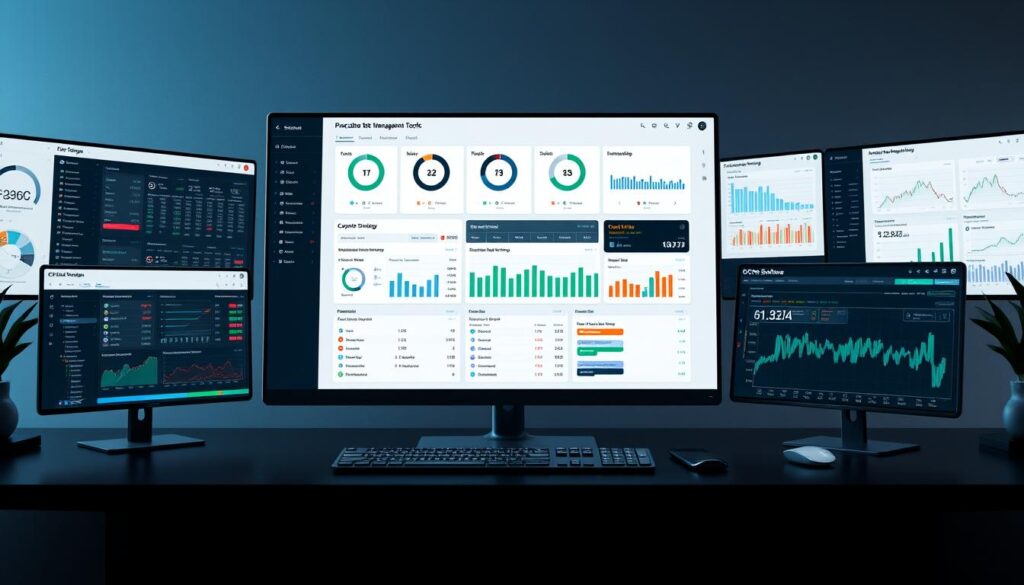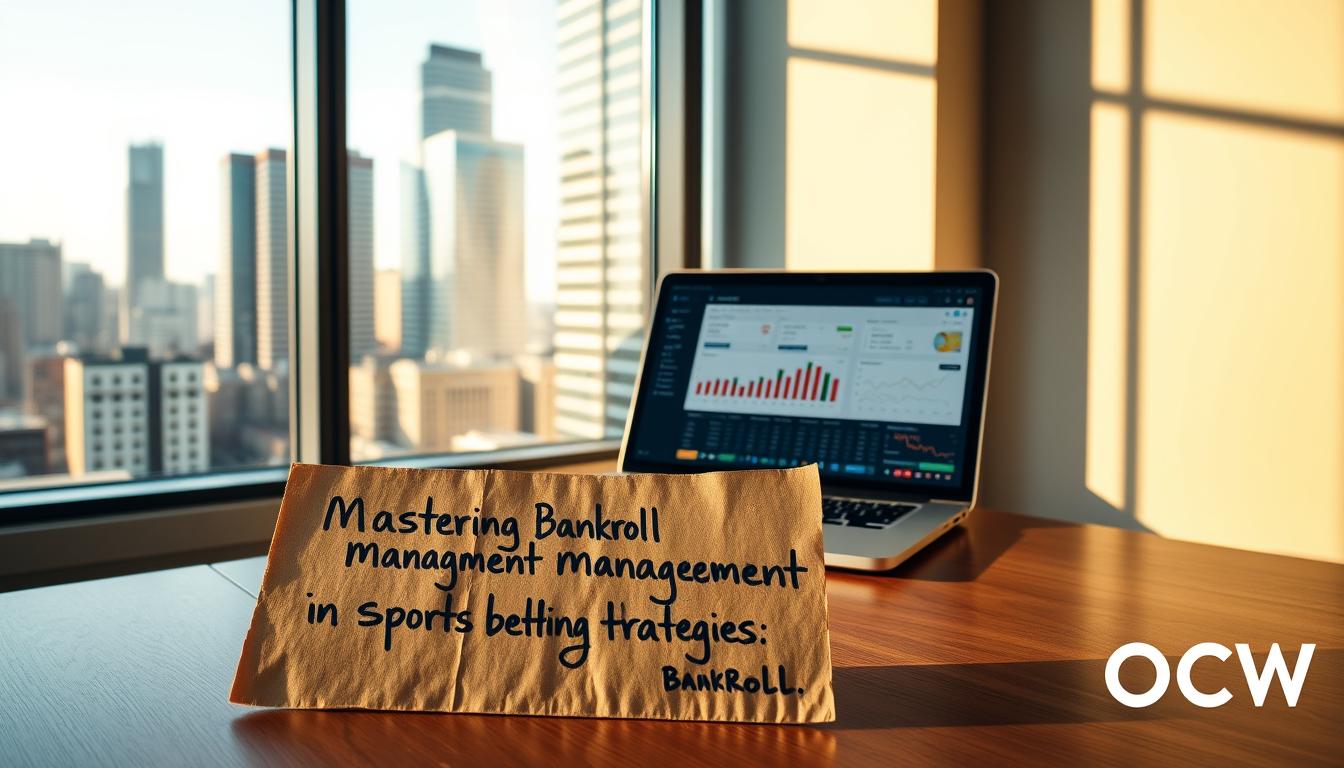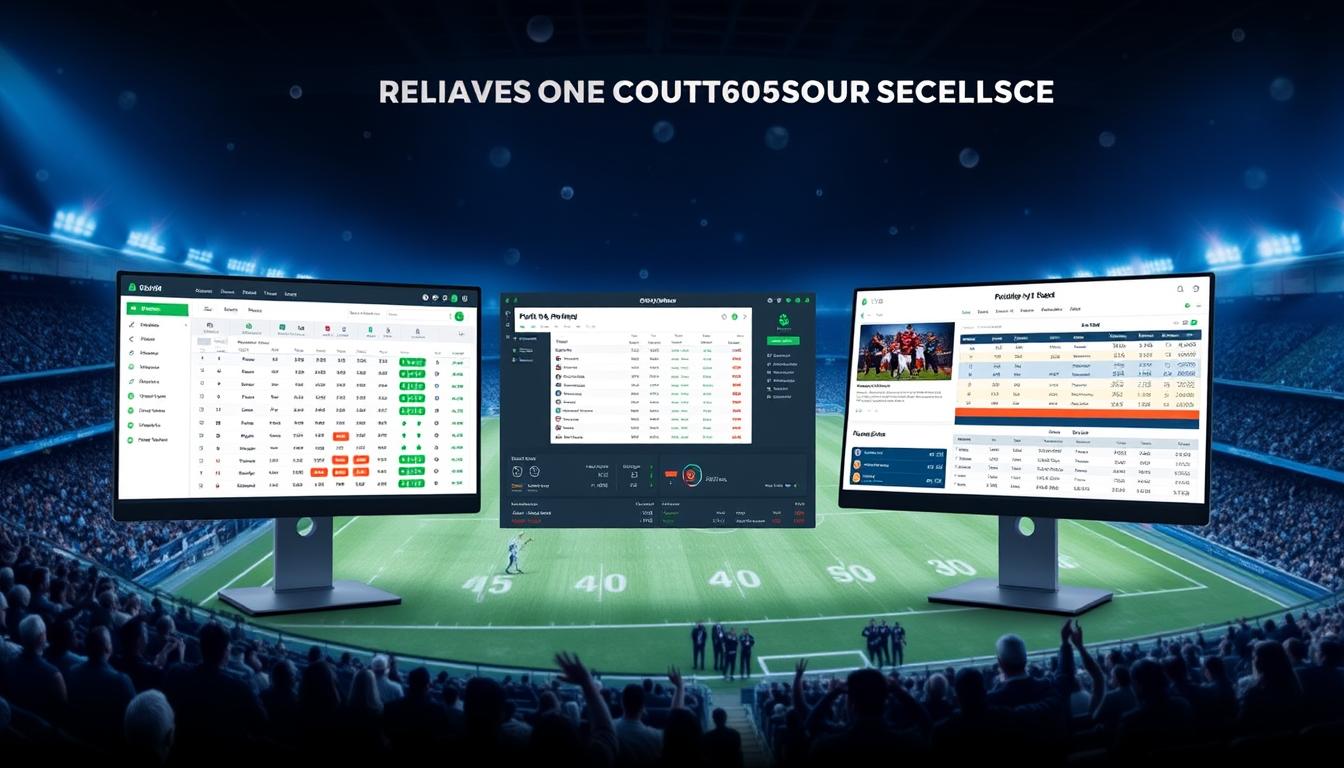Many enthusiasts dive into wagering without a clear plan, leading to inconsistent results. Research shows that 83% of participants struggle to maintain profits over time. This highlights the need for structured approaches to minimise losses and maximise gains.
The global market, valued at £83 billion in 2022, is projected to reach £90 billion by 2030. Such growth demands smarter strategies. Platforms like OddsMatrix help operators tackle challenges such as liquidity gaps and fraud, ensuring a fairer experience for users.
Emotional decisions often lead to poor outcomes. Instead, data-driven methods—like tracking software—help identify patterns. Protecting your bankroll and using proven staking systems, such as the Kelly Criterion, can make a significant difference.
Key Takeaways
- Structured planning improves long-term profitability.
- The wagering market continues to expand rapidly.
- Technology assists in reducing common pitfalls.
- Data analysis outperforms impulsive choices.
- Optimal staking methods safeguard funds.
Introduction to Sports Betting Risk Management
Navigating the world of wagering requires more than luck—it demands a structured approach. Without systematic processes, even seasoned punters face unpredictable swings. This section breaks down the fundamentals and why they matter.
What Is Risk Management in This Context?
At its core, it’s a framework to ensure stability and profitability. Operators and participants alike use it to balance opportunities with potential downsides. Key aspects include:
- Operational stability: Bookmakers set limits to protect their margins (typically 52.5% break-even thresholds).
- Player safeguards: Tools like deposit limits help users avoid impulsive decisions.
- Value calculations: Skilled punters analyse expected value (EV) to overcome built-in house advantages.
Why It’s Non-Negotiable for Success
Ignoring these principles has real consequences. Betfred’s £2.6m fine for lax safety checks underscores the stakes. For individuals, mobile platforms offer convenience but also tempt hasty comparisons. A disciplined strategy turns the odds in your favour.
Consider this: the rise of in-play wagering means decisions must be both quick and informed. Those who adapt thrive; others chase losses. The choice is clear.
The Growing Sports Betting Market and Its Risks
The wagering landscape is evolving rapidly, bringing both opportunities and challenges. Valued at £83 billion in 2022, the industry is projected to grow at 8.4% annually through 2030. This expansion isn’t uniform—Europe leads, but Asia’s emerging markets are closing the gap.
Current Market Trends and Statistics
Mobile platforms dominate, with 43% of fraud attempts linked to digital transactions. High-profile events strain liquidity, requiring advanced settlement engines. Meanwhile, punters leverage Twitter communities and odds tools to sharpen strategies.
Common Risks Faced by Bettors
Technological vulnerabilities top the list, from account breaches to payment delays. Regulatory fragmentation—like differing UKGC and MGA rules—adds complexity. Without adaptation, even seasoned players face mounting risks.
Pro tip: Diversify across regions and platforms to mitigate exposure. The market rewards those who stay informed.
Key Elements of a Robust Risk Management Strategy
Building a sustainable approach to wagering starts with mastering core principles. Whether you’re a casual participant or a seasoned pro, these frameworks help protect your funds while maximising opportunities. Below, we break down the pillars of a winning system.
Bankroll Management
Your bankroll is your lifeline. Experts recommend staking 1–5% per wager to withstand losing streaks. The Kelly Criterion refines this further, adjusting stakes based on edge:
| Staking Plan | Pros | Cons |
|---|---|---|
| Fixed Units | Simple; predictable | Ignores value |
| Percentage-Based | Scales with bankroll | Volatile during dips |
| Kelly Criterion | Maximises growth | Requires precise edge calculation |
“The golden rule? Never risk money you can’t afford to lose. Discipline outweighs talent in the long run.”
Bet Sizing and Staking Plans
Mathematical models remove guesswork. Platforms like OddsMatrix use player profiling to suggest custom limits per market. For instance:
- Fixed units: £10 per bet, regardless of confidence.
- Variable percentages: 2% of bankroll on high-value picks.
One case study saw a 30% ROI increase by balancing Asian handicaps with moneylines. Tools like BonusEngine further optimise costs.
Diversification of Bets
Spreading stakes across uncorrelated events reduces reliance on single outcomes. Consider:
- Mixing football leagues (Premier League vs. Bundesliga).
- Blending bet types (match winner + over/under).
Correlation analysis is vital—avoid stacking dependent wagers that amplify losses.
Understanding Different Types of Betting Risks
A £3.5m fine for Betfred underscores the real-world consequences of oversight. Whether you’re a casual punter or a professional, recognising these hazards helps safeguard your funds and reputation. Below, we dissect three core categories—financial, market, and operational—with actionable solutions.

Financial Risks
Cash flow instability tops this list. Multi-jurisdictional operators often use currency hedging to combat exchange rate swings. For individuals, staking plans like the 1–5% rule prevent overexposure.
Consider Betfred’s penalty for AML failures—a stark reminder that lax controls erode profits. Tools like deposit limits and segregated accounts mitigate such financial exposure.
Market Risks
Odds volatility during live events tests even robust systems. Liquidity gaps emerge when high-profile matches strain platforms. Diversifying across leagues (e.g., Premier League and Serie A) balances this unpredictability.
Pro tip: Monitor Twitter communities for real-time shifts. A 22% customer loss post-penalty shows how *reputational damage* compounds market challenges.
Operational Risks
Legacy systems struggle with API integrations, delaying payouts. White-label solutions introduce counterparty risks—vet providers thoroughly. For punters, outages during peak times disrupt outcomes.
| Risk Type | Example | Mitigation |
|---|---|---|
| Financial | Currency fluctuations | Hedging strategies |
| Market | Odds compilation delays | Multi-platform accounts |
| Operational | API failures | Redundant payment gateways |
“In wagering, foresight beats hindsight. Map risks before they map you.”
Setting Betting Limits for Better Control
Establishing clear boundaries is the cornerstone of disciplined wagering. Without them, even experienced participants can overextend their funds. Tools like OddsMatrix’s behavioural tracking automate limit adjustments, creating a safety net for users.
Daily and Weekly Betting Limits
The UK’s SBC mandates operators to offer limit-setting tools. These caps prevent impulsive decisions, especially during high-stakes events. Consider these options:
- Tiered structures: VIP players might have higher thresholds than recreational users.
- Cooling-off periods: After five consecutive losses, a 72-hour break is advised to reset judgement.
- Auto-lock features: Some platforms freeze accounts if limits are breached repeatedly.
Loss Limits and Profit Targets
A solid management plan includes predefined exit points. For instance:
- Stop-loss rules: Cease activity after losing 10% of your bankroll in a session.
- Profit locks: Withdraw 50% of earnings weekly to sustain growth.
Pro tip: Cross-platform monitoring is tricky—consolidate accounts to track totals accurately.
“Discipline is choosing between what you want now and what you want most.”
Utilising Data and Analytics in Risk Management
In today’s digital age, turning raw numbers into actionable insights separates the best from the rest. Whether you’re a casual punter or a seasoned pro, leveraging data analytics can sharpen your edge and refine your approach.
Tracking Performance with Precision
OddsMatrix’s real-time dashboards provide a goldmine of metrics. Key indicators like closing line value and net yield reveal hidden strengths and weaknesses in your strategy.
Consider these tools:
- Hold percentage: Measures bookmaker margins to spot overpriced markets.
- Time-based trends: Identifies peak profitability windows during live events.
- Third-party integrations: Sportradar’s Betradar complements in-house systems for deeper analysis.
Spotting Profitable Patterns
Machine learning now predicts odds movements with neural networks. Normalising data across sports—like comparing Premier League football to NBA basketball—uncovers universal trends.
For example, late momentum shifts in tennis often follow specific serve patterns. Catching these early can be game-changing.
“Analytics transform guesses into calculated decisions. The numbers never lie—if you know how to read them.”
Advanced Sports Betting Risk Management Strategies
Mastering advanced techniques separates consistent winners from occasional luck. While fundamentals like bankroll protection are vital, refining your approach with mathematical models and tactical hedging unlocks long-term profitability.
The Kelly Criterion for Optimal Bet Sizing
This formula calculates stakes based on your edge. For full implementation, a 19% advantage over the bookmaker’s odds is ideal. However, partial Kelly adjustments suit conservative growth:
- Half-Kelly: Reduces volatility while preserving 75% of potential returns.
- Quarter-Kelly: Ideal for beginners or volatile markets.
One study showed a 22% higher ROI using partial Kelly versus fixed staking. Remember, precision matters—overestimating your edge leads to overexposure.
Hedging Bets to Minimise Losses
Live markets offer fleeting opportunities. During tennis matches, for example, laying off stakes on exchanges like Smarkets locks in profits mid-game. Other tactics include:
- Arbitrage: Exploiting margin discrepancies across bookmakers.
- Asian clearing houses: Distributing high-volume risks efficiently.
“Hedging isn’t about avoiding losses—it’s about controlling them. The smartest players always have an exit plan.”
Combining these tools with disciplined bankroll rules transforms market risks into calculated advantages.
Tools and Software for Effective Risk Management
Technology has revolutionised how punters approach wagering, offering precision where guesswork once ruled. Whether tracking bankrolls or comparing odds, the right systems transform data into actionable strategies. Below, we explore three categories of essential tools.

Bankroll Trackers
Specialist platforms like BetBurger automate value alerts, flagging mispriced betting markets. Key features include:
- Real-time updates: Sync with exchanges to monitor fluctuations.
- Monte Carlo simulations: Project bankroll growth under different scenarios.
- Custom dashboards: Visualise performance metrics like ROI per league.
OddsMatrix’s integration with 15+ payment providers ensures seamless fund tracking—critical for multi-platform users.
Odds Comparison Tools
OddsJam’s liquidity heatmaps highlight arbitrage options across bookmakers. For example:
- Premier League moneylines may vary by 5% between operators.
- Live tennis odds often diverge during tiebreaks.
Such software eliminates manual checks, saving hours weekly.
Betting Model Software
Advanced packages use neural networks to predict outcomes. Developers leverage APIs to build proprietary models, while SSL encryption safeguards data. A case study showed a 27% accuracy boost using these tools.
“The best punters aren’t just analysts—they’re architects of their own edge.”
Avoiding Common Pitfalls in Sports Betting
Even the most disciplined punters can fall into traps that erode their bankroll. Recognising these patterns early is crucial for long-term success. Studies show that 68% of problem gamblers cite “chasing losses” as their primary issue—a habit that often starts small but escalates quickly.
Emotional Betting and Chasing Losses
Behavioural psychology reveals how cognitive biases distort judgement. The hot hand fallacy tricks us into believing winning streaks will continue, while the gambler’s ruin underestimates probability variance. Practical prevention tactics include:
- Bankroll compartmentalisation: Divide funds into weekly segments to limit exposure.
- Mindfulness checks: Apps like BetBlocker assess emotional states before placing wagers.
- Journal analysis: Review past decisions to identify “tilt” triggers—impulsive bets made after setbacks.
“Emotion is the enemy of logic. When frustration mounts, step away—the markets will still be there tomorrow.”
Overconfidence and Underestimation of Risks
Winning streaks breed complacency. A 2022 UKGC report found that 43% of punters increased stakes after three consecutive wins, often ignoring underlying risks. Counter this by:
| Pitfall | Warning Sign | Solution |
|---|---|---|
| Overstaking | Exceeding 5% per bet | Use third-party staking services |
| Market overload | Betting on unfamiliar leagues | Stick to 2–3 core sports |
| Data neglect | Ignoring team news | Set research minimums |
For deeper insights, explore strategies to avoid common mistakes in wagering. Remember, sustainable success isn’t about luck—it’s about consistent, informed decisions.
Case Study: Successful Risk Management in Action
Analysing real-world success stories provides invaluable insights for punters aiming to refine their strategies. One OddsMatrix client achieved a 23% margin improvement by combining data-driven staking with jurisdictional tax planning. This section breaks down their approach—and what you can learn from it.
How a Professional Syndicate Operates
Tony Bloom’s syndicate, Starlizard, exemplifies elite-level execution. Their edge lies in:
- Multi-layered bankroll allocation: Separate funds for arbitrage, value bets, and live trading.
- Exchange-centric tactics: Leveraging Smarkets’ lower margins versus traditional bookmakers.
- Real-time risk engines: Custom algorithms adjust stakes per market liquidity.
Key Takeaways from the SBC Award Winner
A 2022 winner’s bankroll diary revealed three non-negotiable rules:
- Never exceed 2% of total funds on a single event.
- Reallocate profits quarterly to low-volatility markets.
- Use Malta-based entities for tax-efficient withdrawals.
“Consistency isn’t about winning every wager—it’s about losing less than your competition over time.”
These bettors thrive by treating wagering as a business. Their playbooks prove that systematic frameworks beat fleeting luck.
Building a Long-Term Betting Plan
Creating a robust framework for wagering success isn’t about quick wins—it’s about sustainable growth. The most successful punters treat their approach like a business, with clear objectives and adaptable tactics. Here’s how to craft a plan that stands the test of time.
Setting Realistic Goals
The SMART framework works brilliantly here. Instead of vague aims like “win more,” focus on:
- Specific targets: Aim for a 5% monthly return on your bankroll.
- Measurable outcomes Track progress using tools like BetBurger’s analytics dashboards.
- Adjustable timelines: Quarterly reviews help refine tactics as the industry evolves.
Differentiate between macro and micro goals. Weekly session targets keep motivation high, while annual benchmarks ensure alignment with broader financial plans.
Adapting Strategies Over Time
Stagnation is the enemy of progress. Regular skill assessments—like tracking your Sharpe ratio—reveal when adjustments are needed. Consider these steps:
- Monitor regulatory changes that might affect your preferred markets.
- Join mentorship programmes to learn from seasoned professionals.
- Rotate your focus between high- and low-volatility periods.
“The best strategy today might not work tomorrow. Stay curious, stay flexible.”
Contingency planning is equally vital. If a key market becomes over saturated, having fallback options ensures continuity. Tools like OddsMatrix’s liquidity alerts can signal when it’s time to pivot.
Conclusion
Mastering wagering success comes down to three pillars: discipline, data, and diversification. Studies show operators boost profits by 79% after implementing structured strategies. The future lies in AI-driven tools that refine decision-making.
Avoid “get rich quick” traps. Sustainable growth beats short-term wins. Tools like OddsMatrix offer free trials to test advanced analytics. They help spot value while keeping emotions in check.
For deeper learning, explore books like The Logic of Sports Betting or software such as BetBurger. Start small, track progress, and adapt as you go. The right approach turns passion into consistent results.
FAQ
What is risk management in sports betting?
It involves strategies to minimise potential losses while maximising profits. This includes setting limits, analysing data, and diversifying bets.
Why is bankroll management important?
Properly managing your funds ensures long-term sustainability. Without it, even skilled bettors can face financial ruin.
How do I set realistic betting limits?
Determine a fixed percentage of your bankroll per bet. Daily or weekly caps help prevent impulsive decisions.
What tools can help track performance?
Bankroll trackers, odds comparison tools, and specialised software provide insights into trends and profitability.
How does the Kelly Criterion work?
This formula calculates optimal bet sizes based on perceived value. It balances risk and reward effectively.
What are common mistakes to avoid?
Emotional decisions, chasing losses, and overconfidence often lead to poor outcomes. Stick to a disciplined approach.
Can hedging reduce potential losses?
Yes, placing opposing bets on different outcomes lowers risk. However, it may also limit profits.
How often should I adjust my strategy?
Regularly review performance data. Adapt based on market shifts, personal results, and new trends.
What’s the role of data analytics?
Analysing past bets identifies strengths and weaknesses. Data-driven decisions improve accuracy over time.
Are there risks beyond financial loss?
Yes, operational issues like unreliable bookmakers or market volatility can impact success. Always research thoroughly.



